Black Knight Pinball Restoration - From BK to BK-Extreme
Index
Black Knight Pinball History
The Black Knight Pinball machine was designed by Steve Ritchie for William's and was released in December 1980 with a total production run of just over 13,000 units (along with a
second run of a few thousand Limited Edition models which were basically a re-release of the original with micro-switch ball trough upgrades). The Black Knight
pinball design was very revolutionary for its time for it was the first pinball machine to have two levels of play as well as timed drop targets, Magna-Save and many other features.
Keep in mind that prior to 1976, all pinball machines were based on EM (Electro-Mechanical) circuitry and it wasn't until around
1977 that SS (Solid-State) pinball machines took over (the primary difference between
EM and SS machines is that SS machines have a CPU and are computer controlled while EM machines use switches, wheels, motors, relays and solenoid to performe these tasks).
My parents and I moved to
Syracuse in December of 1980 and recall seeing/playing Black Knight at a local arcade (Play Palace in the old Penn Can Mall). If you were a kid and/or were into pinball at this time you
would realize how advanced the Black Knight was compared to what was around prior. So to say the least, this was one pinball machine that I had fond memories of... that is other than
playing it because it was and still is a very difficult machine to play at any age.
Fast forward to March of 2010. My mom, a hostess for Red Lobster, was talking to a co-worker about my brother's pinball collection as well as our family history with pinball machines.
He mentioned that his parents had one that had been sitting in the basement for years because it had broken shortly after they got it (I estimate sometime in the early-to-mid 90's).
When I found out that it was a Black Knight I was very excited. So we picked it up and brought it home, and no we didn't get lucky, the machine was truly broken.
Below are a few pictures of the machine taken in early March 2010 when I first got the machine (including the two above).
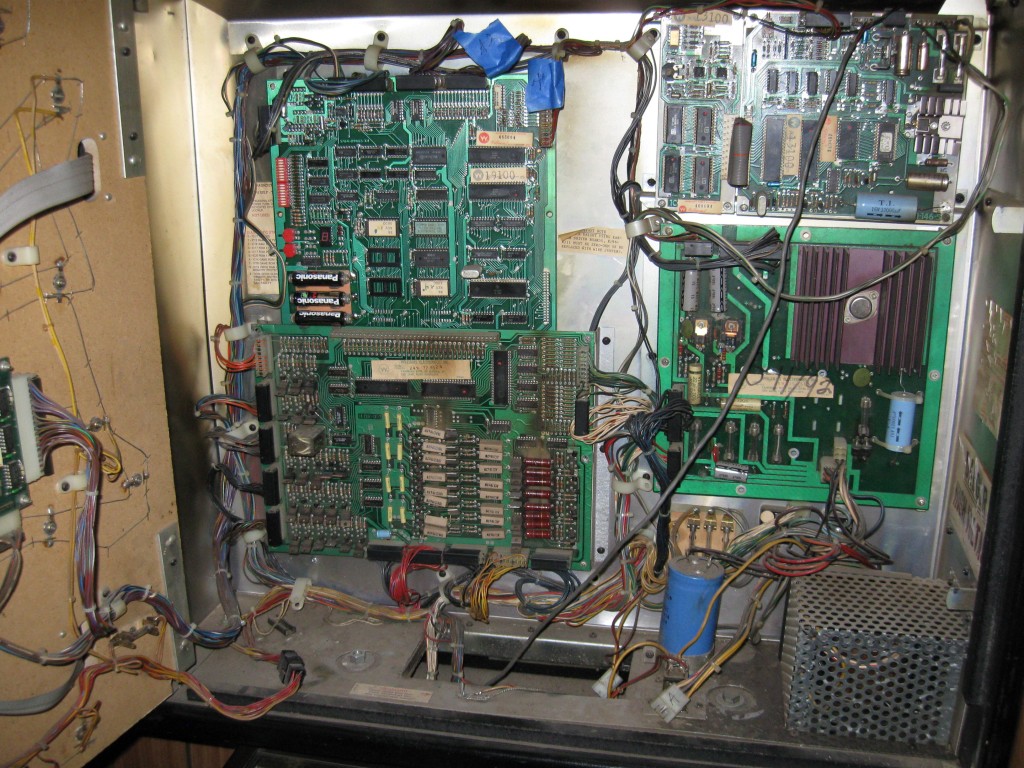
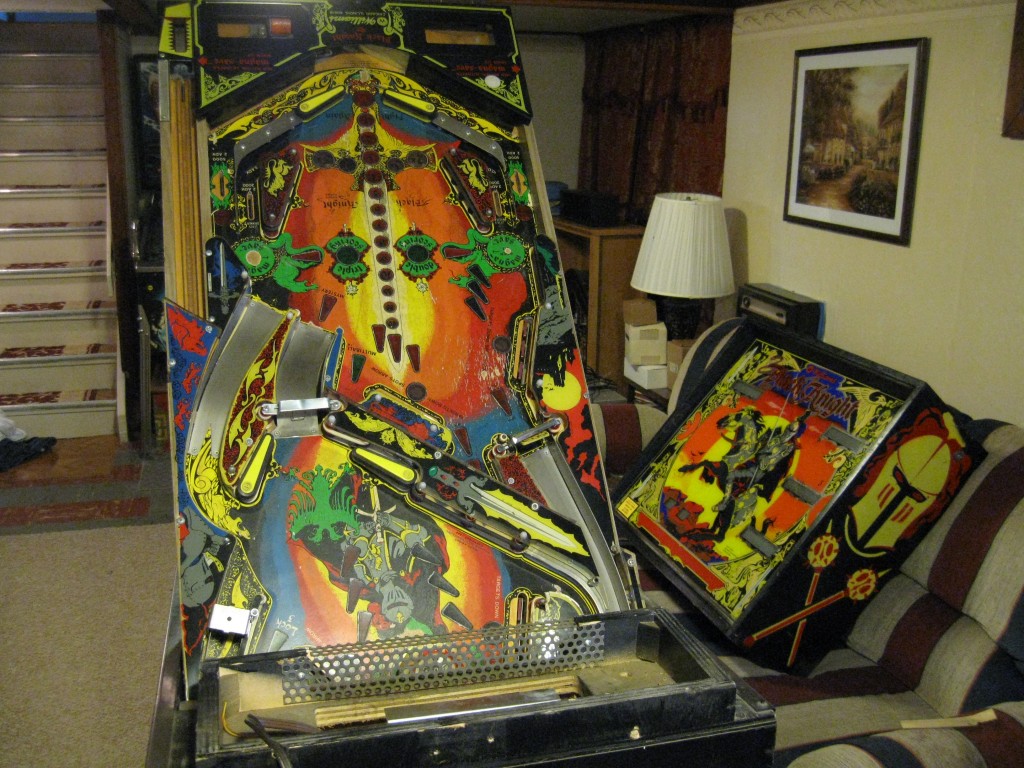
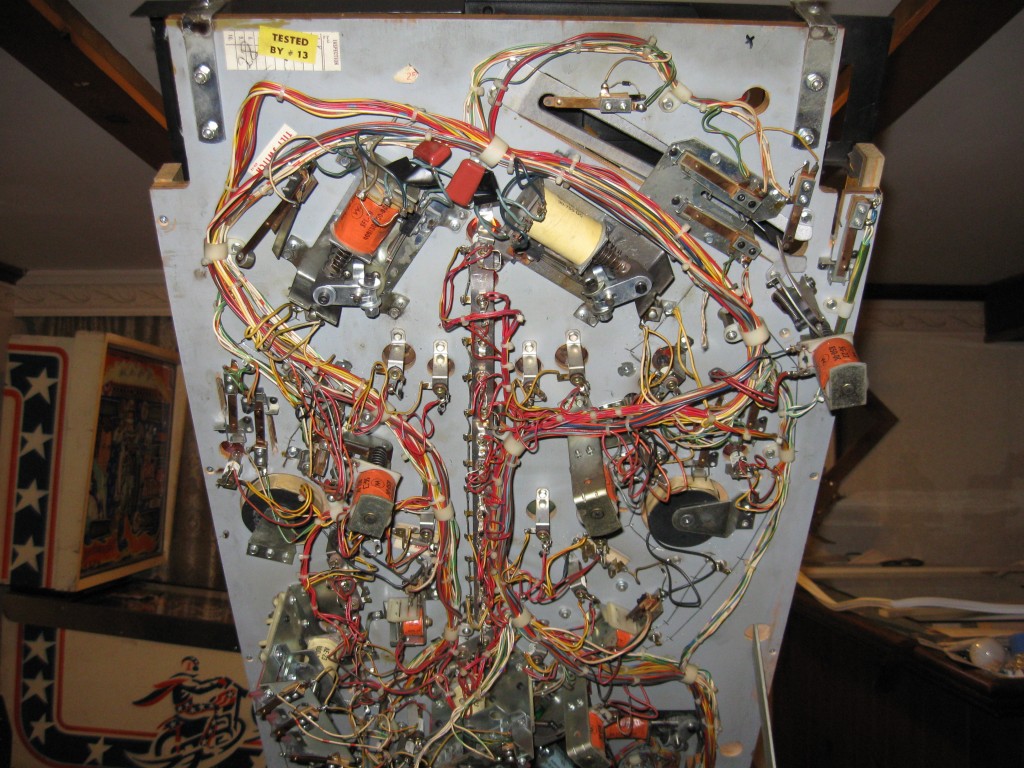
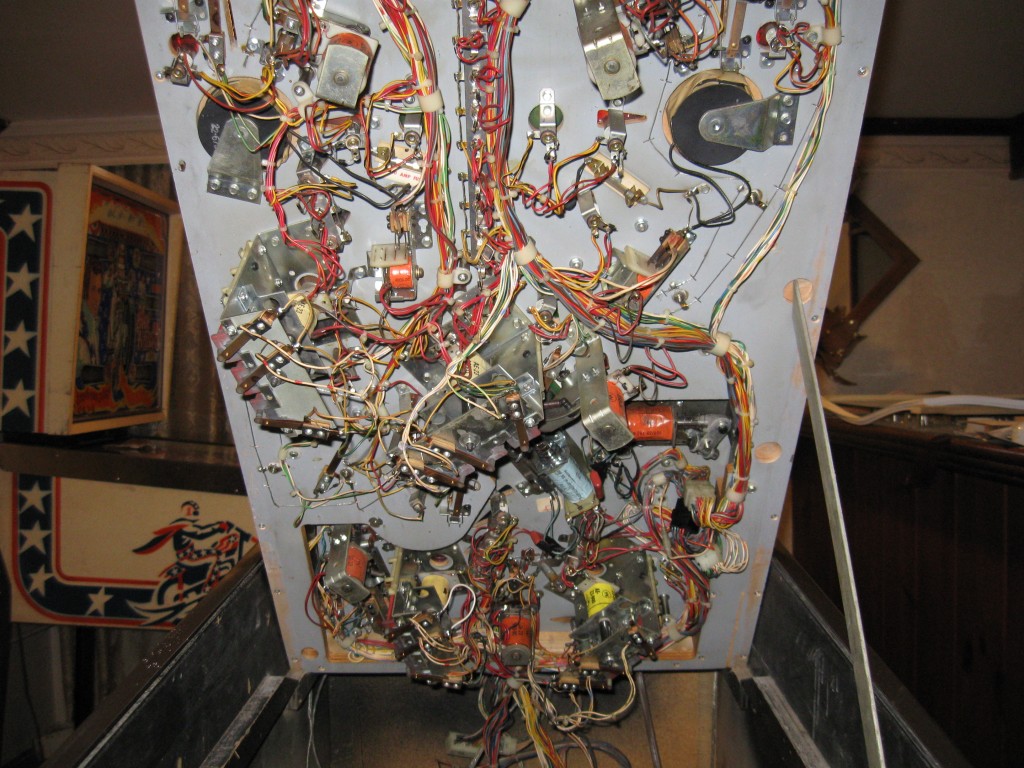
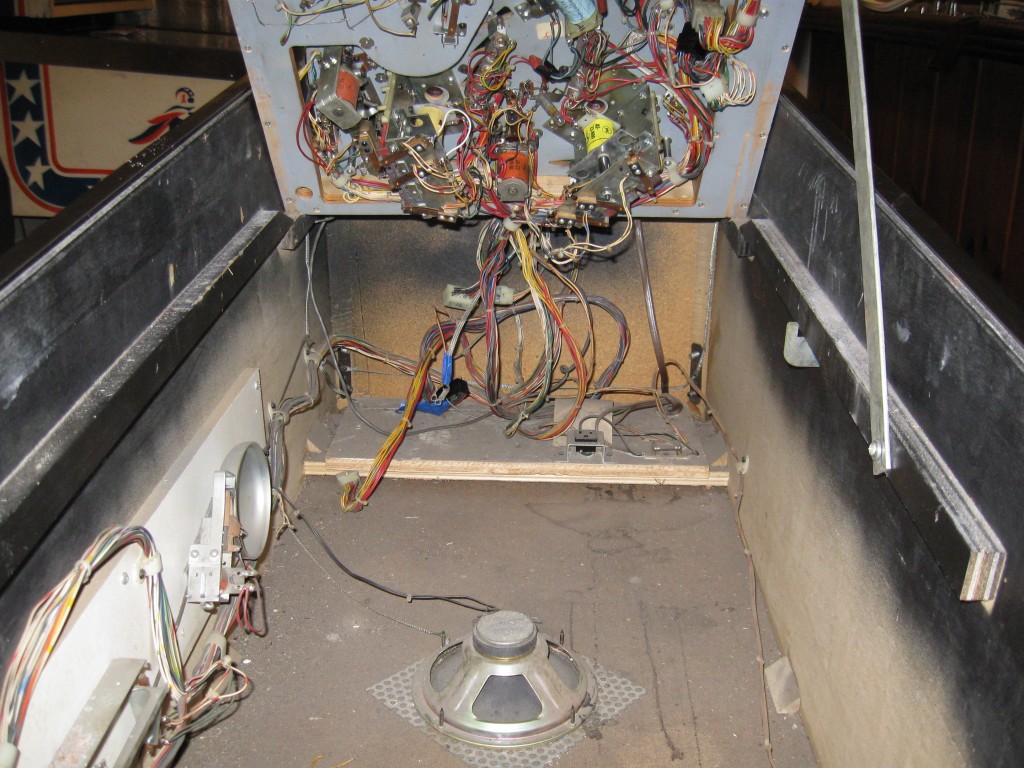
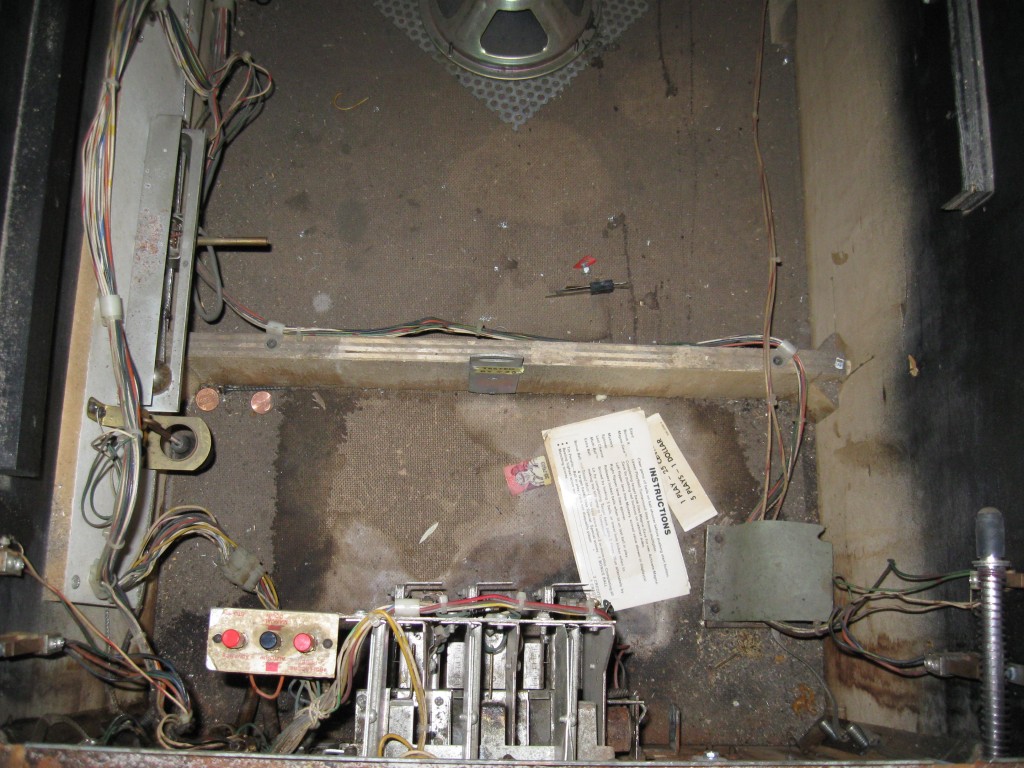
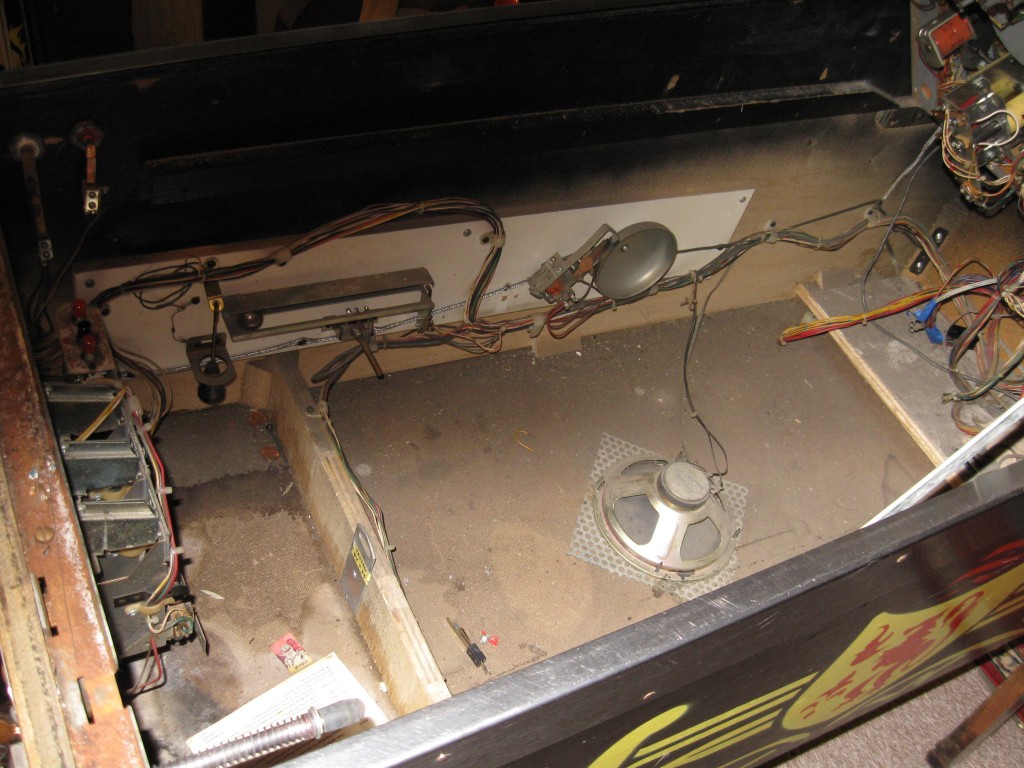
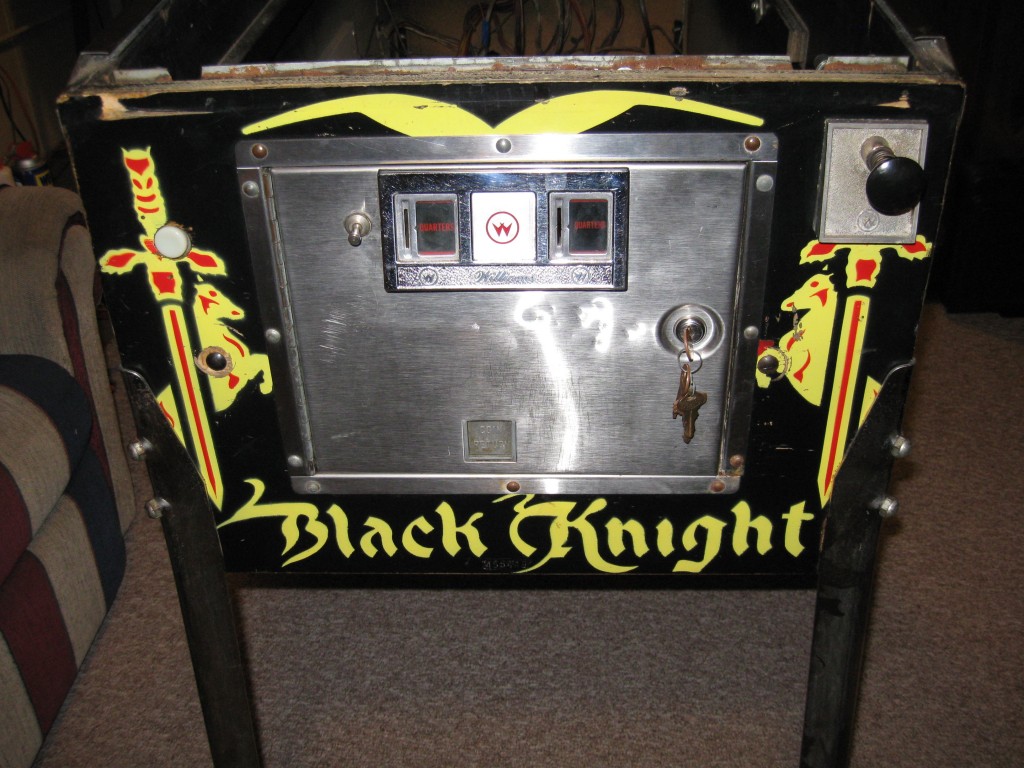
As you can see from the pictures above, this machine was in fair shape despite having been stored for half its life, non-functional. The cabinet actually looks a lot nicer in the pictures
than with the naked eye. There are quite a few gouges but the head is in worse shape than the cabinet. It is apparent that somebody spilled a beer or soda on the playfield glass because
the lockdown bar assembly, coindoor and surrounding cabinet have rust and stains. However, the cabinet is solid in that area. There is a major issue where the head connects to the
lower cabinet. A metal bracket was added to the rear but I later found out that there was a bigger issue with the front side of the cabinet mount as it had split between the plys of the
plywood which could have caused the head to fall backwards. The yellow paint shows signs of fading as it looks a bit pale and lacks the slight orange tint that it should have. The
legs were pretty rusted and twisted but were functional. The coin door was pretty beat up as well. Overall I would rate the original cabinet as a 7.5/10.
Even though the original backglass had a few spots where it had worn through the paint due to rubbing against the displays, it was in better shape than most of the ones that I had later
seen, probably because it wasn't damaged by the heat of the GI bulbs (only exposed to them for half its life). Based on this I would say that my backglass is close to a 9/10 or better
especially in relationship to most of the other original (non NOS, non repro) Black Knight backglasses which are show signs of paint flaking unlike mine. The unlit backglass can
be seen in the first picture at the top of the page. As you'll see later, there is a
difference in the paints used for certain colors on the backglass, most notably the dark gray of the armor shines much brighter with the repro backglass as well as the contrast between
the yellow and gold accents. I believe it was an attempt to enhance the look of the artwork through the lighted backglass because in the daylight both backglasses look nearly identical.
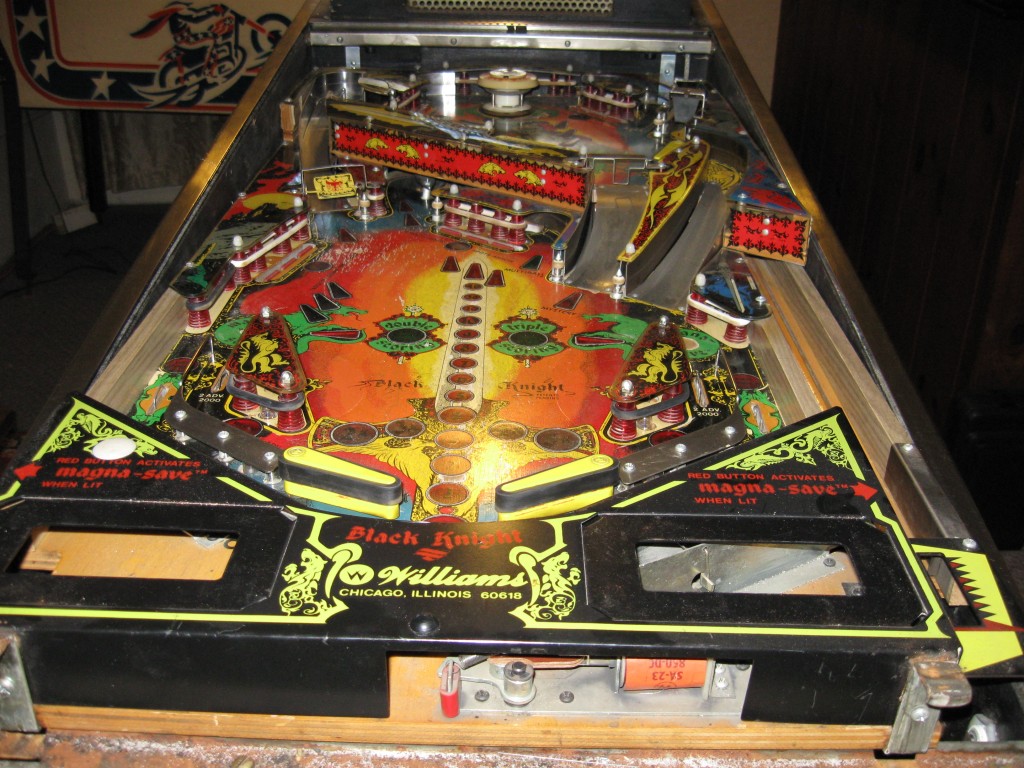
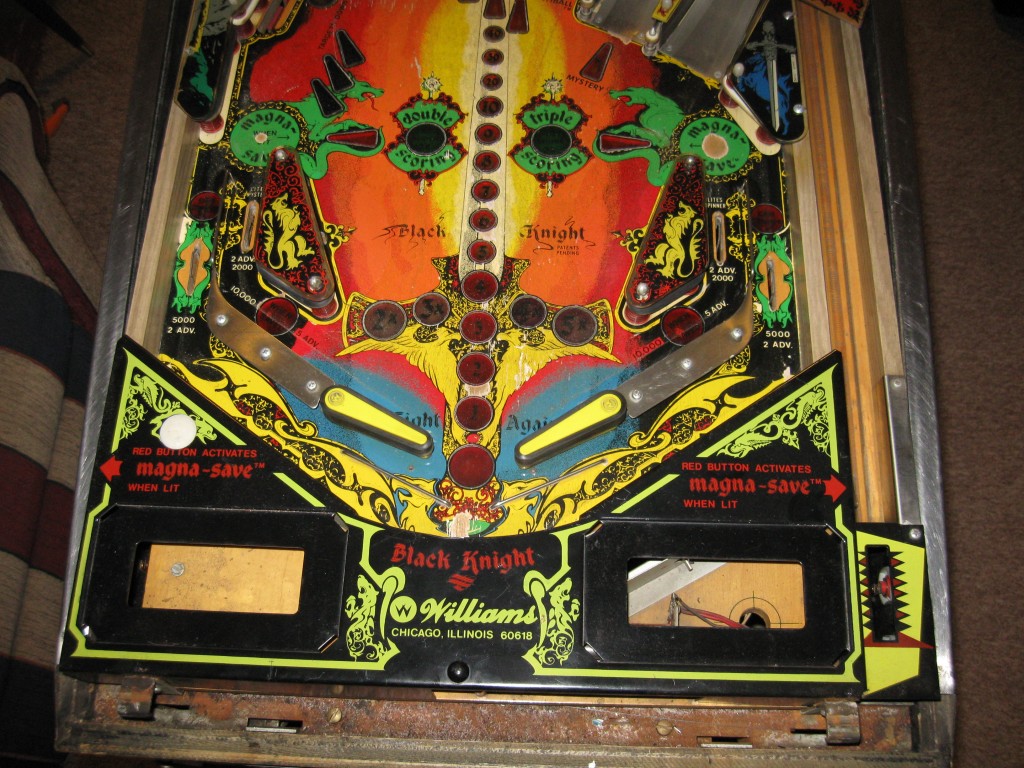
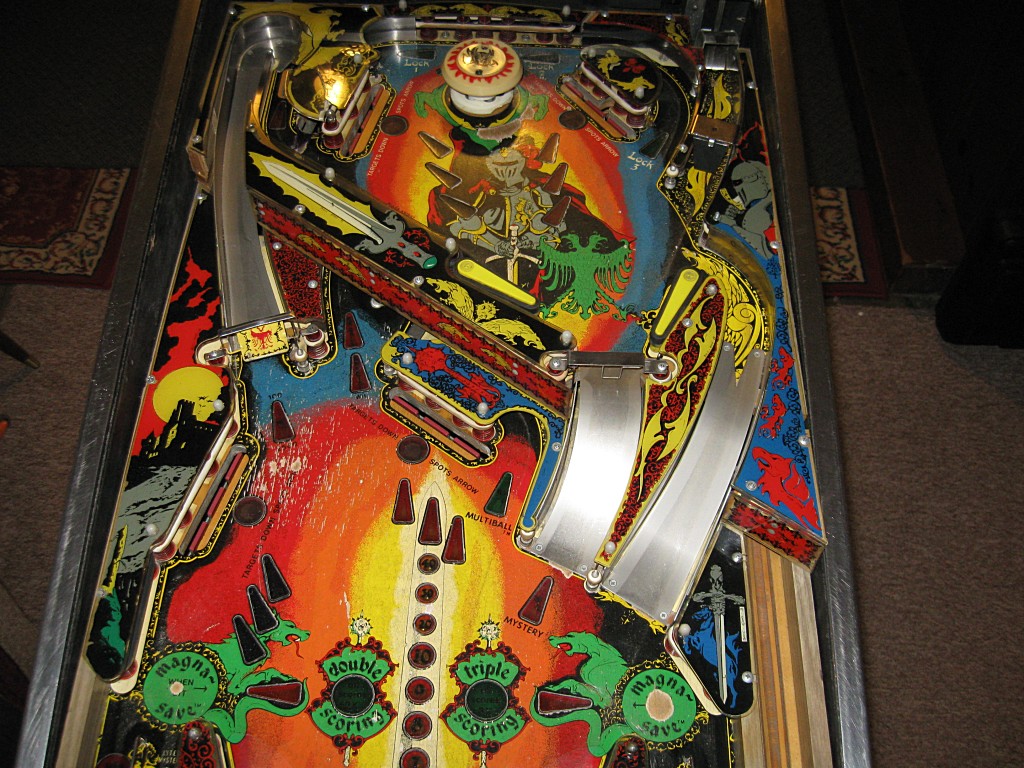
As more of a player than a fixer, I find that the playfield is the most important part of a pinball machine in terms of condition and how it affects the ball. This playfield is pretty beat
but this isn't out of the ordinary for this machine because it was very popular in when it came out. Most of the Black Knights that I've seen at pinball shows are at least as bad as
this one in terms of wear. However, I think that it detracts from the look and play of the machine and would only rate this playfield around 5/10.
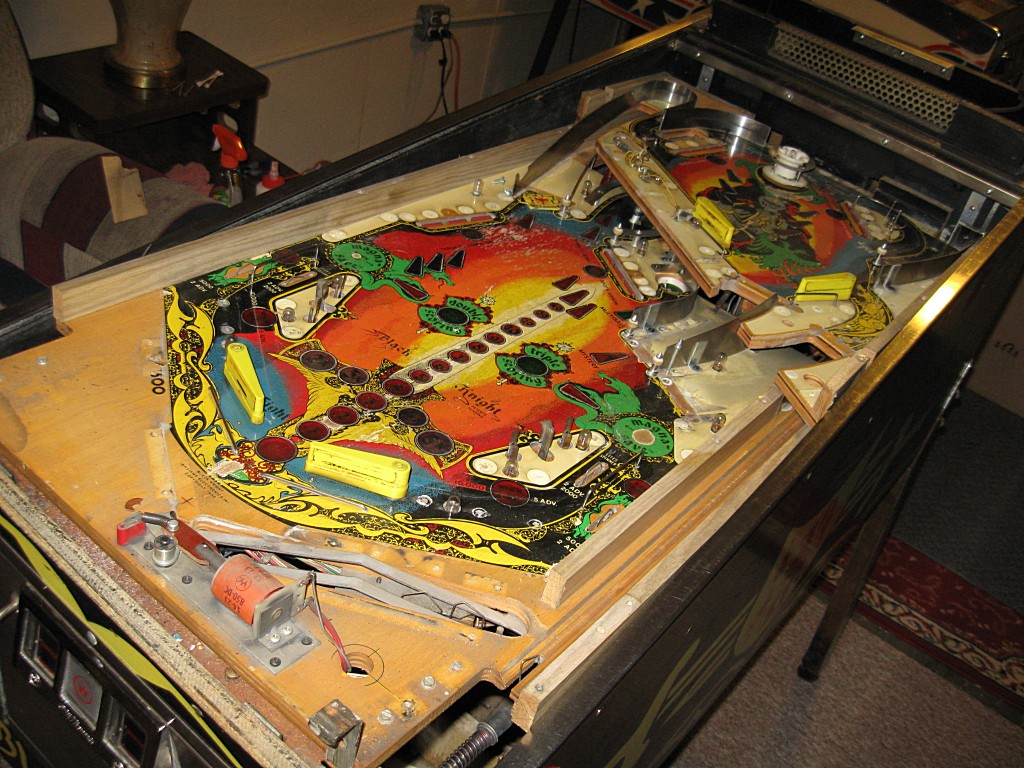
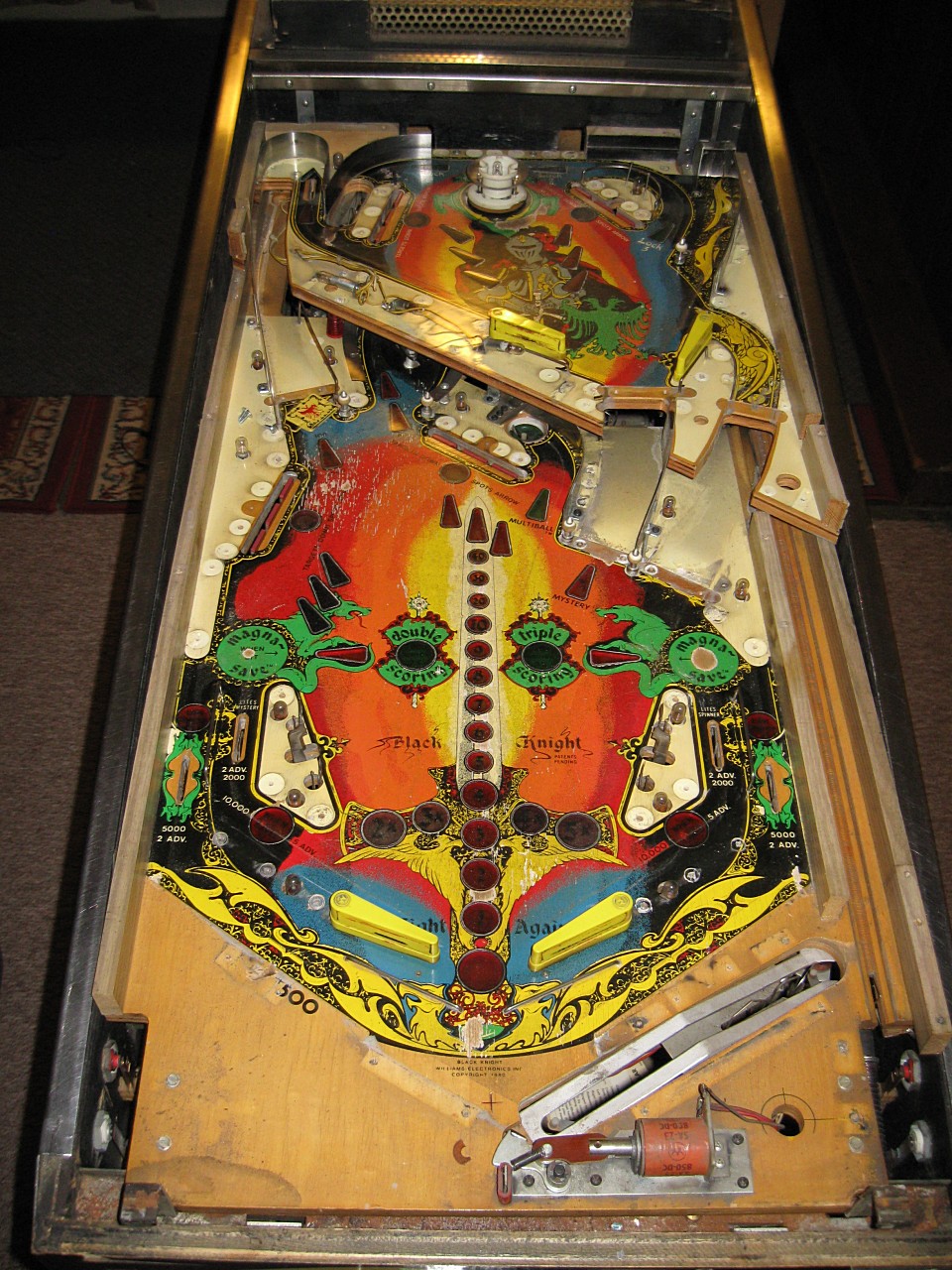
The first thing that I did, 2 days after getting the machine, was to strip down the playfield and clean everything as well as take inventory of any parts that need to be replaced. I was
really surprised at the condition of all of the ramps and metal parts which was good because those are a bit tougher to find. Once it was all cleaned up, I put everything back together
along with a new set of rubbers but, of course, I still couldn't play it. It sat for a few weeks until I stumbled upone one of "Pinball Ninja's" repair jobs on the internet which shared
similar symptoms as my Black Knight where the GI lights would turn on and the displays would show game specific numbers (turned out to be a bad battery/holder, as I'll discuss below).
 |
|

